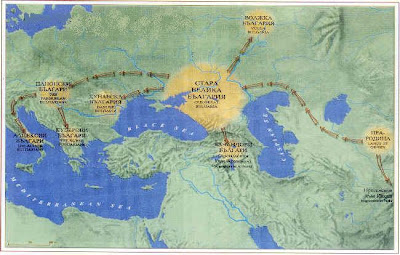I love these animals..
Косатката (Orcinus orca) е най-големият представител на семейство Делфинови. Среща се във всички океани и е бозайникът с най-голям ареал, след човека.
Косатките имат сложна система на обществена организация. Основната единица е матрилинеарна и се състои от една женска (матриарх) и нейните потомци. Групата се състои от синовете и дъщерите на майката, синовете и дъщерите на нейните дъщери и така нататък по родословното дърво. Тъй като женските могат да живеят до 90 години, не е необичайно четири или дори пет поколения косатки да живеят в една и съща група. Тези матрилинеарни групи са много устойчиви във времето. Индивидите се отделят от групата само за по няколко часа, за да се чифтосват или да търсят храна. Няма данни за постоянно пропъждане на индивид от неговата матрилинеарна група. Средният размер на тези групи в североизточната част на Тихия океан е от 9 животни.
Матрилинеарните групи имат склонност да се събират с малък брой други такива групи, образувайки стадо, състоящо се средно от около 18 животни. Всички членове на стадото имат един и същ диалект (вижте секцията за звуците по-долу) и се състоят от близкородствени матрилинеарни фрагменти. За разлика от матрилинеарните групи, стадата понякога се разделят за дни и седмици в търсене на храна, преди да се съберат отново. Най-голямото регистрирано стадо е от 49 животни.
Следващото ниво на групиране е кланът. Той се състои от стадата със сходен диалект. Изглежда връзката между тях отново е родствена, като те се състоят от части от семейства с общи предци по майчина линия. Различни кланове могат да обитават една и съща географска област. Често са регистрирани стада от различни кланове, пътуващи заедно. Когато стадата се събират, за да пътуват като клан, те се поздравяват, образувайки две успоредни редици едни срещу други преди да се смесят.
Последния слой на асоцииране, може би най-произволният и създаден от хората, за разлика от другите естествени разделения, са нарича общност и се дефинира като група кланове, за които редовно се наблюдава да се смесват помежду си. Общностите нямат специфични семейни или звукови характеристики.
Интересни факти:
Женските достигат зрелост на възраст около 15 години.Бременността продължава от петнадесет до осемнадесет месеца. Майките раждат по едно малко приблизително веднъж на пет години.Смъртността на новородените е много висока - според едно изследване почти половината от малките не достигат шестмесечна възраст. Малките сучат до две години, но започват да приемат твърда храна на около година. Майките раждат до около 40-годишна възраст, което прави средно по пет малки за целия им жизнен цикъл. Женските обикновено живеят до 50 години, но в някои случаи достигат до 80 или 90-годишна възраст. Мъжките стават полово активни на 15 години и живеят средно до 30, в отделни случаи до 50 години.
Пустинната култура Наска, създала линиите на платото Наска, е изобразила косатка в периода между 200 пр.н.е. и 600 г.
Няма известни случаи на хора, нападани от живеещи на свобода косатки, но моряците в Аляска понякога убиват животните, загрижени за собствения си живот. Принос за това има и името на косатките на английски - „killer whale“ („кит убиец“).
Силните шумове от корабите са принудили някои групи косатки да променят честотата на звуците си.
Интелигентността, склонността към дресиране, поразяващата външност, игривостта и големия размер на косатките ги превръщат в популярен експонат за аквариуми и други водни развлекателни центрове. Колко жалко..
via: wikipedia.org








